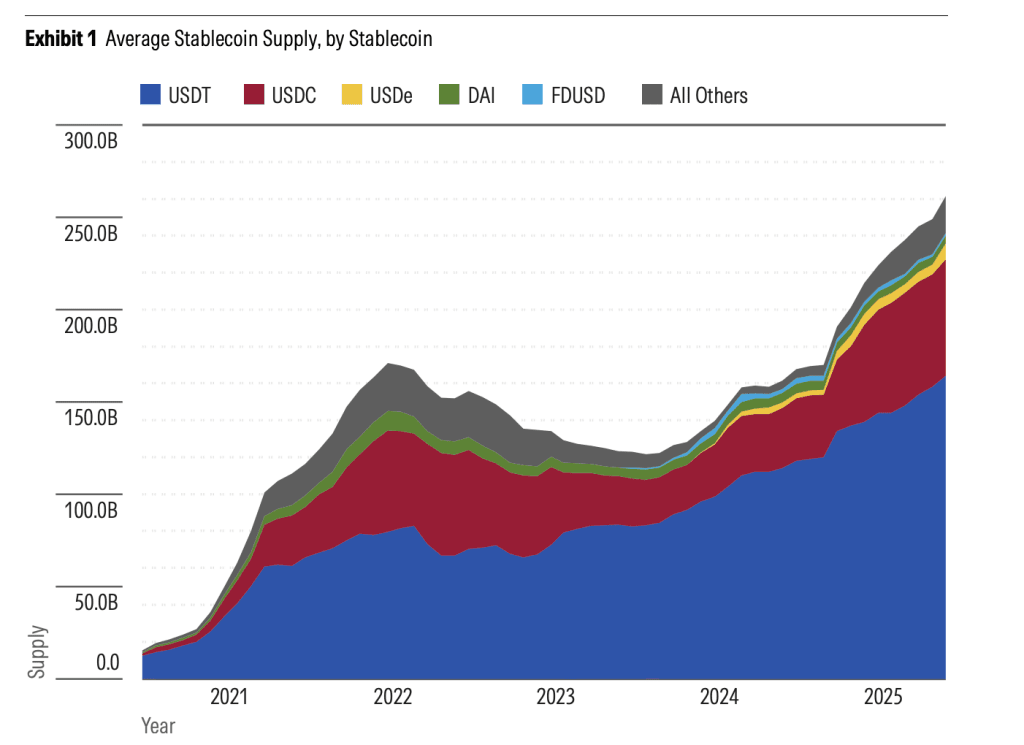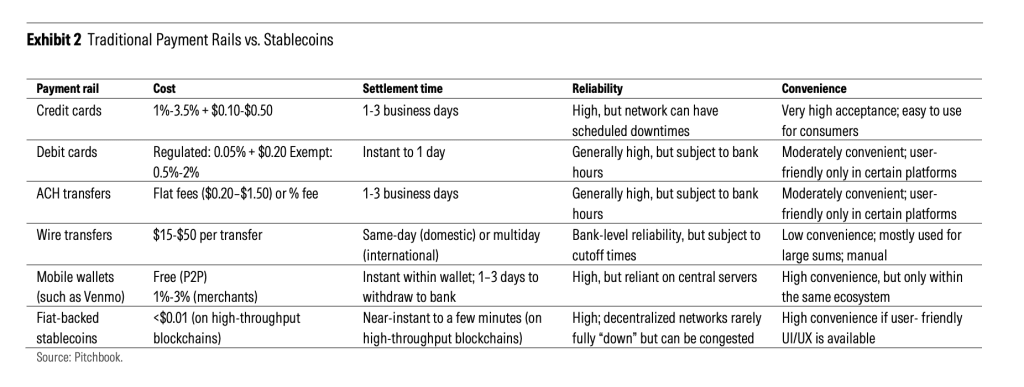
According to Morningstar DBRS data, stablecoins have quickly become a core pillar of the digital asset economy, with a total market capitalization exceeding $230 billion by mid-2025.
The market is dominated by Tether (USDT) and Circle (USDC), with other participants including USDe, DAI, and FDUSD (see Chart 1). This growth is driven by their stability (peg to the dollar) and their ability to act as digital cash within the blockchain ecosystem.

The first federal stablecoin legislation passed on July 17 has also accelerated progress. The agency noted that as regulations come into place, U.S. banks are starting to explore launching their own stablecoins.
"Stablecoins provide efficiency and innovation to the financial system, but they also present opportunities and risks for banks," wrote a Morningstar DBRS analyst in a report released on Tuesday.
How stablecoins work: cheaper, faster, smarter money.
Morningstar explains that stablecoins are designed to combine the reliability of fiat currency with the efficiency of blockchain. Unlike traditional payment rails (credit cards, ACH, or wire transfers), stablecoin transactions can settle in seconds.

"Stablecoins are programmable money," Morningstar points out, emphasizing their use in automated financial operations through smart contracts.
This makes them attractive for cross-border payments, e-commerce, and remittances. Major issuers like Tether, Circle, and PayPal support their tokens with reserves of short-term U.S. Treasury securities and cash equivalents to ensure stability and redeemability.
The efficiency advantage is obvious: wire transfer fees can be as high as $50 and may take several days to settle, while stablecoins can be transferred instantly at negligible costs. This dynamic is attracting users away from banks' legacy systems.
Risks faced by American banks: deposits and payments are under threat.
Morningstar warns that the rise of stablecoins poses a real risk to the core business model of American banks. The most pressing issue is deposit flight.
If consumers increasingly hold stablecoin funds for rewards, convenience, or integration with decentralized finance, banks may lose the deposits that support their lending activities.
According to the Bank for International Settlements, stablecoins still account for only 1.5% of total U.S. deposits, but growth is accelerating.
A massive shift of funds from bank accounts to stablecoins could limit banks' ability to fund new loans or provide credit, "Morningstar analysts noted.
Banks also face the risk of losing profitable payment fees. Stablecoins bypass networks such as ACH and SWIFT, enabling cheaper and faster transfers. As shown in Chart 2, the cost advantage is significant, threatening revenue from transaction services.
It's not all bad news: the path forward for banks.
Despite the risks, Morningstar still emphasizes potential opportunities. Banks can leverage their regulatory credibility to act as custodians of stablecoin reserves, manage holdings of U.S. Treasury securities, and provide settlement and compliance infrastructure. These services could open up new sources of fee revenue.
The newly passed GENIUS Act (Guiding and Establishing United States Stablecoin National Innovation Act) sets capital and reserve requirements for issuers, creating a fairer competitive environment. Some banks are considering launching their own fully backed stablecoins and integrating them into existing compliance systems to retain deposits and remain competitive.
"Whether stablecoins ultimately represent an opportunity or a threat for American banks will depend on regulatory design and market adoption," Morningstar concluded.
#Binance Web Wallet and @binancezh and @BinanceWallet;



